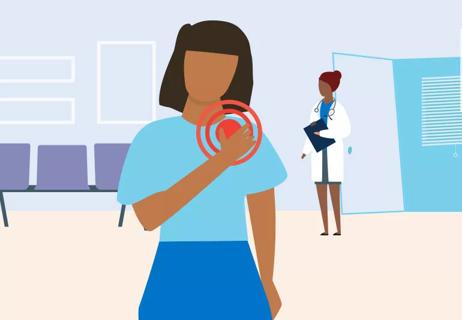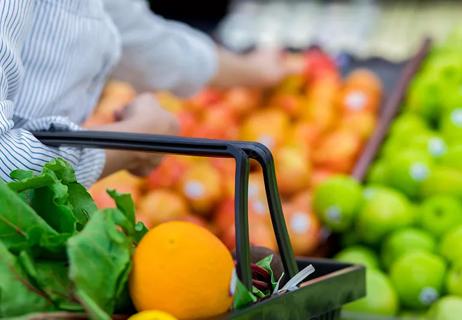Plus, ways to keep your bones healthy and strong!

No bones about it, your skeletal system is a huge part of what keeps your body at peak performance. But did you know you lose bone density as you age? Or that your longest bone is in your thigh? And what about the idea that your bones are literally living tissue? We cover these facts about your skeletal system and more with orthopaedic surgeon Kim Stearns, MD.
Advertisement
Cleveland Clinic is a non-profit academic medical center. Advertising on our site helps support our mission. We do not endorse non-Cleveland Clinic products or services. Policy

If you’re feeling a little hollow today, there’s a good reason. You’ve got 206 bones right now, but you were born with around 300. The reason babies have more bones than adults is that skeletons fuse together as you grow older. That’s how you end up with one solid skull instead of the soft spots between bones called fontanelles.
A baby’s knees are made of cartilage, or soft bones. With age, these harden over time. That’s why kneecaps aren’t fully developed until around age 10 or 12.
Each hand has 27 bones, while each foot has 26. Together, that’s a combined 106 bones that allow you to run a race, walk a mile, jump a rope, kick a ball, write a ballad, give a high five and pick up your phone.
You have growth plates at the ends of the bones in your arms and legs. These plates are made of cartilage. They’re usually fully developed in the late teens for boys and within two years of a girl’s first period.
Keep your healthy bones strong by providing them with the nutrients they need. The trick is to get adequate amounts of calcium, vitamin A, vitamin K and vitamin D from the foods you eat as early in life as possible. Once you stop growing and you begin to lose some bone density with age, these vitamins and minerals continue to strengthen your bones and keep them healthy.
Advertisement
The collagen in bone constantly replenishes itself. It’s also the most prominent protein in your entire body, making up about 30% of your body’s total protein. Bones repair themselves so quickly that you have a new skeleton about every seven years.
Although they lack collagen, your teeth contain calcium and minerals like bones. Plus, the enamel that protects the nerves and tissue inside your teeth is stronger than any other bone in your body. In fact, your enamel is so strong that it’s resistant to decomposition after death, making your teeth a permanent part of your skeleton.
Your femur (or thigh bone) is the upper leg bone that runs from your hip to your knee. It’s the longest and largest bone in your body because it’s responsible for supporting your entire body weight. And that’s no easy feat when you’re doing high-impact exercises like burpees or jump rope.
The stirrup-shaped stapes in your middle ear (measuring only 0.11 inches) are the shortest bones in your body. They’re part of your ossicles — a three-bone structure in your middle ear responsible for sending sound from your outer ear to your inner ear. Without them, you’d experience hearing loss.
You might find this humorous, but it’s true: Your upper arm bone is called your humerus. That’s what gives your “funny bone” its name. But in reality, anytime you bang your elbow on something, it’s the ulnar nerve that triggers a surprisingly tingling, prickly pain.
Your joints are like the hinges on a door — they exist as a connection between two different bones. Some (like your knee joint) move a lot. Others (like the joints in your skull) don’t move at all. Muscles and ligaments support your joints, and cartilage helps cushion them. But when cartilage wears out, you get arthritis in your joints.
There’s a crescent-shaped bone that anchors your tongue and helps you speak and swallow. It’s called the hyoid, and it’s not connected to any other bone. Instead, it’s held in place by ligaments, muscles and cartilage.
Your skeleton shields your brain, heart, lungs and other major organs from harm. But it also plays a massive role in your immune system. Bone marrow — located in the spongy center of most of your bones — makes white and red blood cells. White blood cells help protect you from infections and red blood cells help transport oxygen through your entire body. So, without your bones, your body would be wrought with infections and quite literally fall apart.
Most broken bones heal on their own — blood vessels form in the area almost immediately after you break it to help the healing process begin. Within 21 days, collagen forms to harden and hold the broken pieces in place. The damaged surfaces knit together to form new bone, and often, the new bone is stronger than the original one.
Advertisement
Women tend to have a smaller skeletal system than men. They’re also at higher risk for low bone density and bone loss. But their pelvic bones are also wider for childbirth. As a fetus grows, a woman’s pelvis and hip bones shift to provide more space.
“Your bones and your skeleton are truly amazing,” notes Dr. Stearns. “How they grow, repair themselves and keep your entire body positioned as you move through your life makes it so important that you do your best to keep them healthy. Eat well and exercise as often as you can so your bones can support you as long as you need them to.”
Advertisement
Learn more about our editorial process.
Advertisement

Bone health starts with proper nutrition, exercise and healthy lifestyle choices

It could be an injury, arthritis, a bone infection or even the position of your collarbone

Why pills aren't a substitute for food

While an ultrasound shows your muscles and tendons, an MRI also shows your joint cartilage, bones and heart chambers

Getting enough of this essential mineral is important for your bones, teeth and so much more

Phosphorus works with calcium to build strong bones and teeth, plus other important roles

Eating enough dairy, fish and leafy greens is a good way to help keep your bones strong

The ‘sunshine vitamin’ is found naturally in some fish and is added to other foods

Autism and ADHD often go hand in hand, giving rise to the term AuDHD

The Yuzpe regimen is less effective than other forms of emergency contraceptives, and it’s associated with more side effects